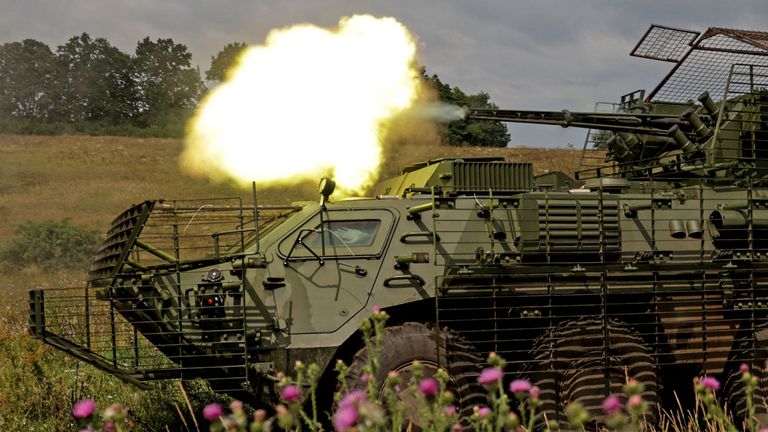The “if” was doing some heavy lifting.
Mr Trump floated the idea of a second meeting, this one between Putin, Zelenskyy and possibly himself, “if” the Alaska summit goes well.
Speaking to European leaders earlier, in a virtual call he rated at “10” and “very friendly”, he’d shared his intention to try to broker a ceasefire on Friday.
So, the strategy is crystallising – he will press for a trilateral meeting to discuss territory “if” he manages to secure a truce during the bilateral meeting.
But that begs the obvious question: what if he can’t?
The US president is keeping his options open – rating the chance of a second meeting as “very good” but preparing the ground for failure too.
“There may be no second meeting because if I feel that it is not appropriate to have it because I didn’t get the answers that we have to have, then we’re not going to have a second meeting,” he said.
Unusually, given how often he talks about his abilities, he conceded that he may not persuade Vladimir Putin to stop targeting civilians.
Read More
Trump’s threat to Putin – Ukraine latest
What could Ukraine be asked to give up?
Sky News’ Ukraine Q&A
But without elaborating on what any sanctions might be, he warned that Russia would face “very severe consequences” if it doesn’t end the war.
Even if he achieves the seemingly impossible – a halt to the fighting – there seems little chance of agreement on any swapping of territory.
Mr Zelenskyy has told Mr Trump that Putin “is bluffing” and wants to “push forward along the whole front” not return land.
In the space of a week, Donald Trump has gone from talking about a land-swapping deal, to a “listening exercise”, to the potential for a ceasefire.
His expectations appear changeable, an indication of how fluid back-room negotiations are in the run-up to his first face-to-face with Vladimir Putin in six years.
He described Friday’s summit as “setting the table for a second meeting”, but that’s presumptuous when the meal – or deal – isn’t cooked yet.
This story originally appeared on Skynews


